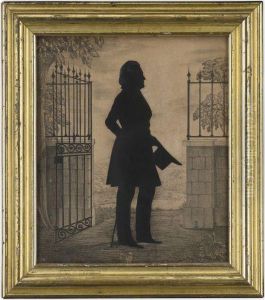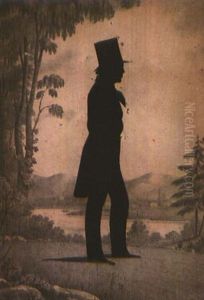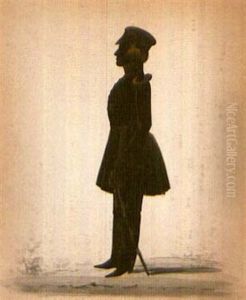William Henry Brown Paintings
William Henry Brown was a notable figure in the world of American art, particularly known for his contributions to the medium of silhouette portraiture. Born in 1808, Brown's early life and artistic training, like many artists of his era, are not thoroughly documented. He is often remembered as one of the first professionally recognized American silhouette artists.
Brown's work as a silhouette artist began in Charleston, South Carolina, around the 1830s. At that time, silhouette portraiture was a popular form of capturing likenesses due to its affordability compared to painted portraits. Brown's skill in cutting silhouettes directly from black paper without any preliminary drawing distinguished him from his contemporaries. He used a variety of papers and sometimes embellished his silhouettes with gold or bronze highlights, a technique that contributed to the uniqueness of his work.
During the 1830s and 1840s, Brown traveled extensively along the East Coast of the United States, creating silhouettes of many prominent figures of the time, including politicians, celebrities, and everyday people. His itinerant practice led to a wide dissemination of his work and established his reputation as a master of the silhouette. Brown's subjects were often depicted in profile, as was typical for silhouettes, but his work is characterized by a sense of individuality and attention to detail that captured the essence of his sitters.
Brown also compiled his work into a publication titled 'Portrait Gallery of Distinguished American Citizens,' which was released in the 1840s. This gallery included both silhouettes and biographies of notable individuals and is considered an important historical document today. The book showcased Brown's talent in the medium and offered insight into the prominent figures of American society during that era.
William Henry Brown's silhouettes are now housed in various museum collections, including the Smithsonian American Art Museum and the National Portrait Gallery. His work provides a valuable glimpse into the antebellum period in America and stands as a testament to the popularity and craftsmanship of silhouette portraiture. Brown passed away in 1883, leaving behind a legacy that continues to be appreciated by art historians and collectors alike.



